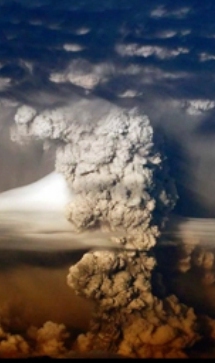 |
K. Harald Drager, President of TIEMS – The International Emergency Management Society
You just held your 18th Annual Conference in Bucharest, Romania, from 7 to 10 June 2011. Which disasters were on top of your agenda?
The Japanese earthquake and tsunami was top focus. In the first keynote plenary session Dr. Kit Miyamoto, Miyamoto International and Global Risk Miyamoto, USA, was speaking about “Failures and successes observed in 2011 Tohoku Japan earthquake”. However, we covered most disasters that happened around the world including means to reduce the consequences. Among the topics were: Environmental risks assessment (“Natural risk assessment and management with information technology application” by the Institute of Environmental Geosciences, Russian Academy of Sciences, Seismological Center) and terrorism strategies (“Qualitative research on terror network Influence in Indonesia” by Florida State University, USA). Last but not least there was a track about social perception (“Ten disasters and major accidents in The Netherlands” by NIFV, The Netherlands).
The Education and Solidarity Key Lesson of TIEMS 18th Annual Conference lead to a declaration, adopted on 10 June 2011 at the Intercontinental Hotel Bucharest. Why is that?
We as TIEMS family members realize that the intensity and incidences of natural and human induced disasters are increasing due to rapid environmental changes including global climate change, while at the same time the use of vulnerable areas for settlement increases the risks. Such practices of unplanned urbanization and settlement have put our expanding cities and peripheral rural areas at high risk of calamities.
The disasters of varied nature have been leading to stressful life of the people living in vulnerable areas. While floods, landslides, fires, cyclones and epidemics have been hitting hard almost concurrently every year, the earthquakes and tsunami in Japan, New Zealand, Haiti – the floods of Pakistan, China, Europe, the tornado in the USA and a number of other disasters in various parts of the world have resulted in the death of many thousands of people and caused enormous damage to physical property costing billions of dollars.
This is why TIEMS members reinforce their full commitment and support to provide a platform for knowledge and collaboration involving all stakeholders in the field of Disaster Risk Reduction (DRR).
Would you please point out three statements of the declaration?
First, there is a need for an organization like TIEMS, which is specialized in knowledge management, to share knowledge, exchanging experiences through the series of workshops and annual conferences in various parts of the world. Hence, TIEMS aspires to helping nations to establish and encourage proactive organizations and backstop technology.
Second, disaster related events, forecasts and other matters of common concerns should be exchangeable. Early warning and evacuation mechanisms have to be strengthened through the collaborative works amongst all stakeholders, including the neighbouring countries.
Third, TIEMS encourages the coordination of NGO activity to maximize resource potential.
For which disasters should international associations have a plan in store?
This depends on the potential hazards the organizations are facing. This can be exposed by doing a risk assessment of potential hazards first.
For an association which has no crisis plan but would like to make one, how should the leaders begin?
As I mentioned above, start with a risk assessment, with hiring an expert to lead the assessment but involving the whole management team who knows the organization and the threats it is facing. It is important that top management stays behind and knows the result of such an assessment.
What do associations need to consider by implementing an emergency strategy?
They need to be aware of risks and what remedies they have at hand or can establish to deal with the risks.
Members look to their association for help in a crisis. Have you advice for association managers at such a time?
Be prepared! All organizations should be prepared by doing above, and inform the whole organization, so everybody knows what to do in a crisis situation.
Which support does The International Emergency Management Society offer?
TIEMS has a network of experts around the world which can be called upon for consultations locally or globally.
K. Harald Drager is President of TIEMS – The International Emergency Management Society. TIEMS is an international network of users, planners, researchers, industry, managers and other interested parties within emergency and disaster management. The global network of experts TIEMS is communicating with is around 10,000. Within this network TIEMS stimulates to the exchange of information on the use of innovative methods and technologies within emergency and disaster management to improve our ability to avoid, mitigate, respond to, and recover from natural and technological disasters. www.tiems.org